Plant Cyclamen in your Garden: [Care, Irrigation and Transplantation]
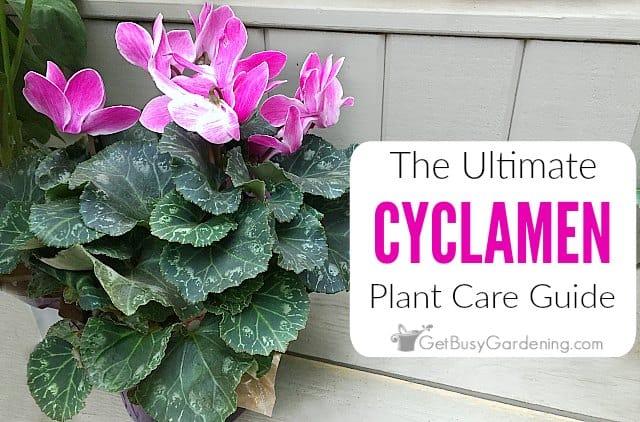
The Cyclamen or cyclamen, is a wonderful tuber plant that blooms spectacularly in winter. It does not present woody organs and for this reason it is considered herbaceous and perennial.
Its tubers can be rooted on the surface or only at the base.
Its fleshy leaves with a long petiole, have a mottled green color on the upper side and green or purple on the underside. But flowers are her greatest treasure.
They have large petals and are characterized by their chromatic variety. There are from white to pink, purple and give off a very pleasant attractive smell.
Originally from the Mediterranean forests, it grows in winter in the shade of the trees, so it can be said with total adherence to the truth that it is the enemy of heat.
Important points when planting cyclamen:
- When? Late summer is planting time.
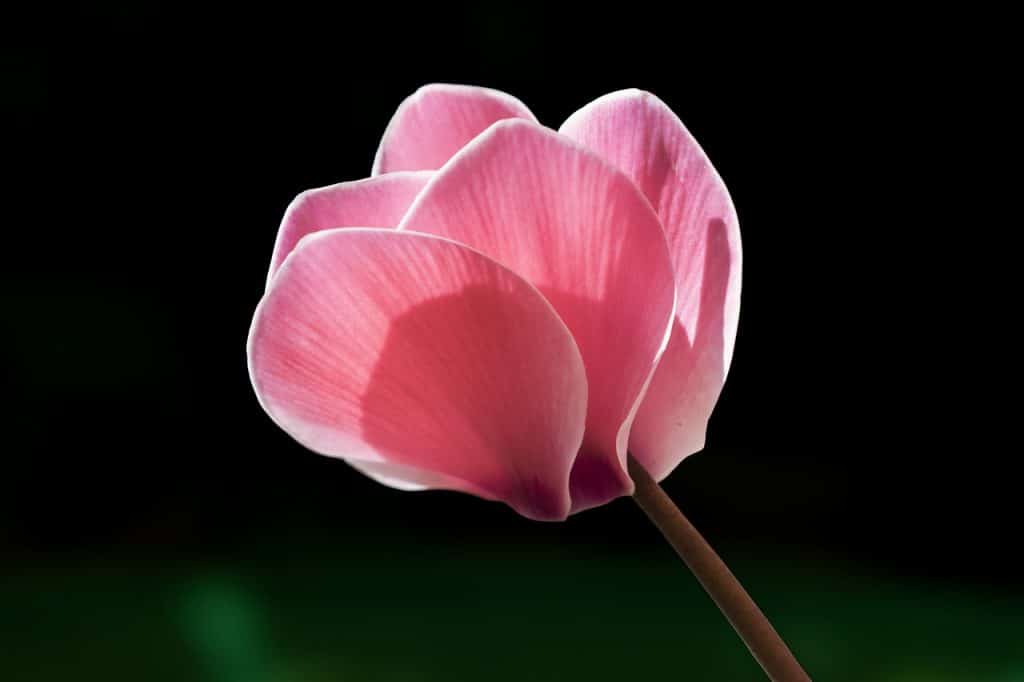
- Where? In gardens, in a good place in partial shade, or in pots placed in cool places inside the house.
- Demanding care? They must be kept at always cool temperatures because it is awinter plant. Ideally at 16°C. Another important care is to always maintain the humidity of the substrate so that it does not get sick.
- How to prepare the land? Peat and sand are a good substrate for cyclamen and a good fertilizer before the flowering period begins will be very beneficial.
- How do we water? Excess moisture is very harmful and lack of water also makes her sick. Immersion irrigation is the most convenient.
- Plagues and diseases? Red spider, mites, rot.
When to sow cyclamen?
It should be planted in semi-shade, at the end of summer, because when the hot season begins, it withers and the bulb remains dormant in the ground, waiting for the arrival of the following autumn, so in spring and summer it is in a resting period.
Where to plant cyclamen?
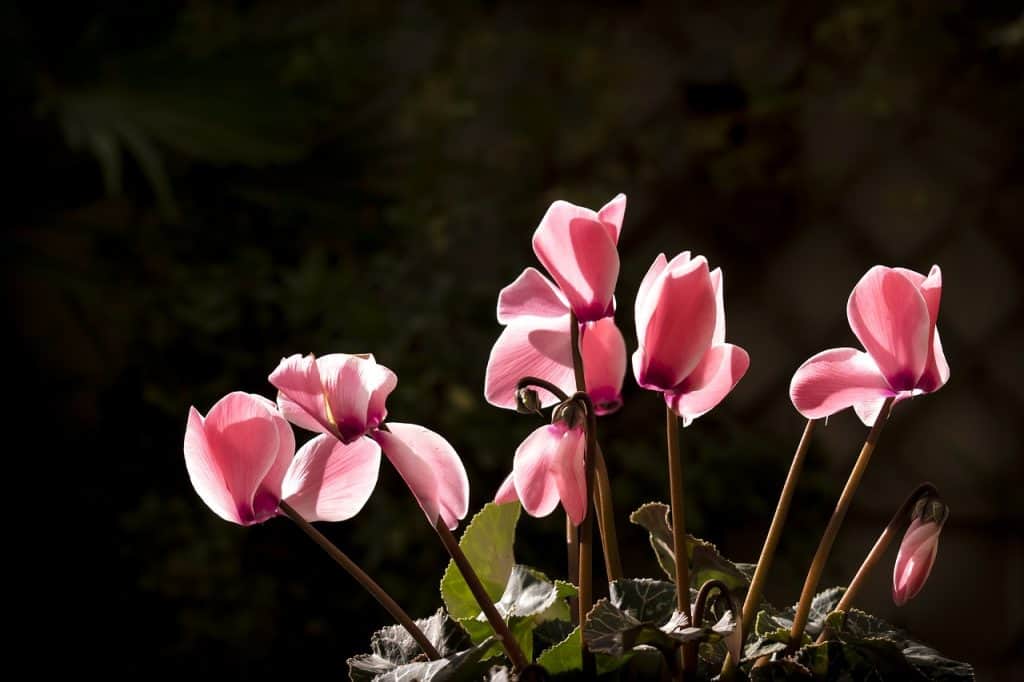 cyclamenprefers very cool and ventilated spaces.They can grow outdoors or indoors, but not in areas of the house that concentrate heat because the process of death of flowers and leaves can be accelerated.
cyclamenprefers very cool and ventilated spaces.They can grow outdoors or indoors, but not in areas of the house that concentrate heat because the process of death of flowers and leaves can be accelerated.
And if it is grown in a garden, you have toput it in partial shadeso that direct sunlight does not hit it, because it also damages it.
How do we prepare the land?
The land mustbe of very good substrate,preferably composed of peat and sand so that it drains very well. As the plant grows, it is convenient to transplant it in a pot and change the soil when its flowering period ends.
It is also recommendeduse liquid fertilizer that is added to the irrigation water.
To strengthen the flowering period and make it abundant, it is very appropriate to supply it with a fertilizer with a high degree of potassium and while the growth phases of the plant last, it will greatly appreciate a fertilizer with a higher degree of nitrogen so that the parts greens are beautiful and healthy.
How do we water the cyclamen?
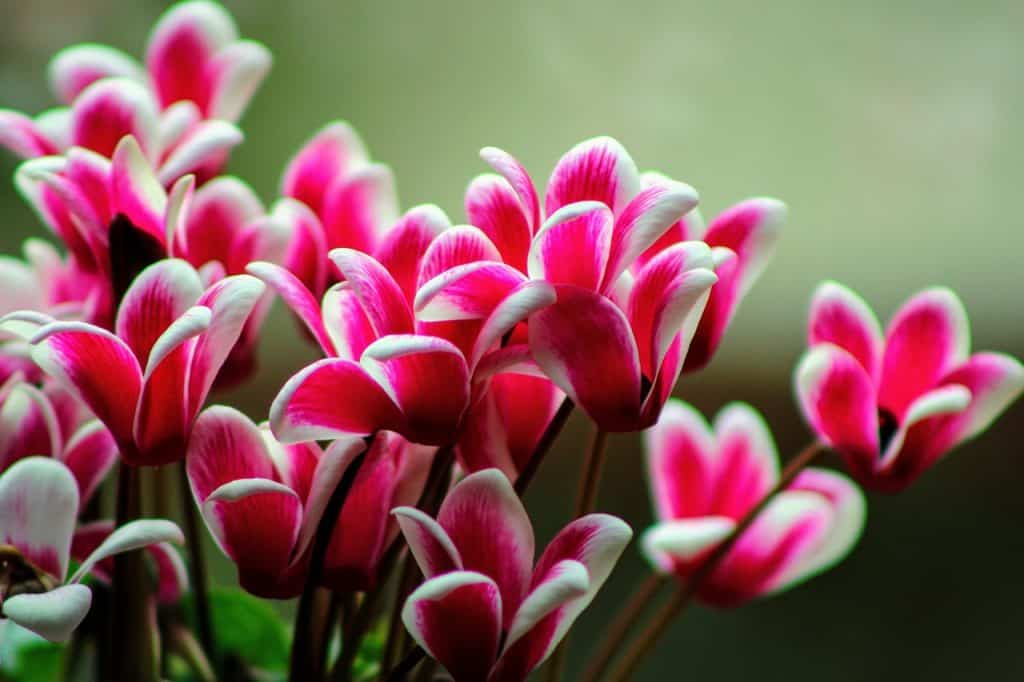 Excess moisture causes rotting in the bulb and stems,so it should be watered moderately.
Excess moisture causes rotting in the bulb and stems,so it should be watered moderately.
And if the earth is allowed to dry, alsowill suffer from dehydration,so great care must be taken and it is mandatory to keep the substrate always humid, worse eliminating excess water from the saucer, when it is preserved in a pot.
The best method is immersion irrigation or drip irrigation, butalways avoiding wetting the tuber.Placing a plate with water so that it absorbs what it needs is the best irrigation technique.
How do we plant cyclamen step by step?
There aretwo excellent methodsto multiply or sow them.
The method of multiplication by seeds is carried out at any moment of the summer. How to do it?
- Distribute the seeds as evenly as possible in parallel files using seed potting soil.
- As the seeds are small, to bury them lightly, they can be pushed down with mulch using a piece of flat wood.
- To prevent possible fungal attacks, it is advisable to add a broad-spectrum fungicide to the irrigation water.
- The tray containing the cyclamen seeds should be placed in a shaded place, at a temperature of around 20°C.
- Use a sprayer to completely moisten the soil, until the moment of germination arrives.
- After about a month and when the seeds have already germinated, the protective transparent plastic cover or mantilla is removed, and as the plants grow, the amount of light they receive will be increased and the temperature should be reduced to about 18°C. with good ventilation.
- The less vigorous or weak plants are eliminated, in order to give more space to the healthy and robust ones.
- When they are strong enough, they can be transplanted, taking great care not to damage the roots or any other part of the plant.
Multiplication by division of the tuber
- The tuber is the central axis of the plant. Rounded or flattened, leaves and flowers sprout from it in the upper concave part, the roots do so in the lower convex part.
- Divide the tuber with the help of a sharp, clean and disinfected knife into more parts. It is usually divided into two and each one is destined for individual pots.
- The pots must already have soil ready with a very good substrate, composed of peat and sand, to guarantee good drainage, so that they receive the buds or parts that you have already divided, which you will place on top so that they adhere to the soil.
What care do you have?
If we want it to spend a long winter flowering season at home, the cyclamen should spend the night in the least hot place and in the evening you should place it in a window so that it receives fresh air, or it can stay on a balcony where it does not receive heavy rains or unbearable frost.
mustavoid temperatures above 16°C,because it simply does not support them and it will only cause leaves and flowers to wither before their time.
And if you grow it outside, it is better to place it in semi-shaded spaces to avoid direct sunlight. However, if planted indoors, it will require a certain dose of direct sunlight.
What pests and diseases does it have?
They are very prone to getting sick as long as they face unfavorable environmental conditions. Among the most common we have the following:
yellowed leaves
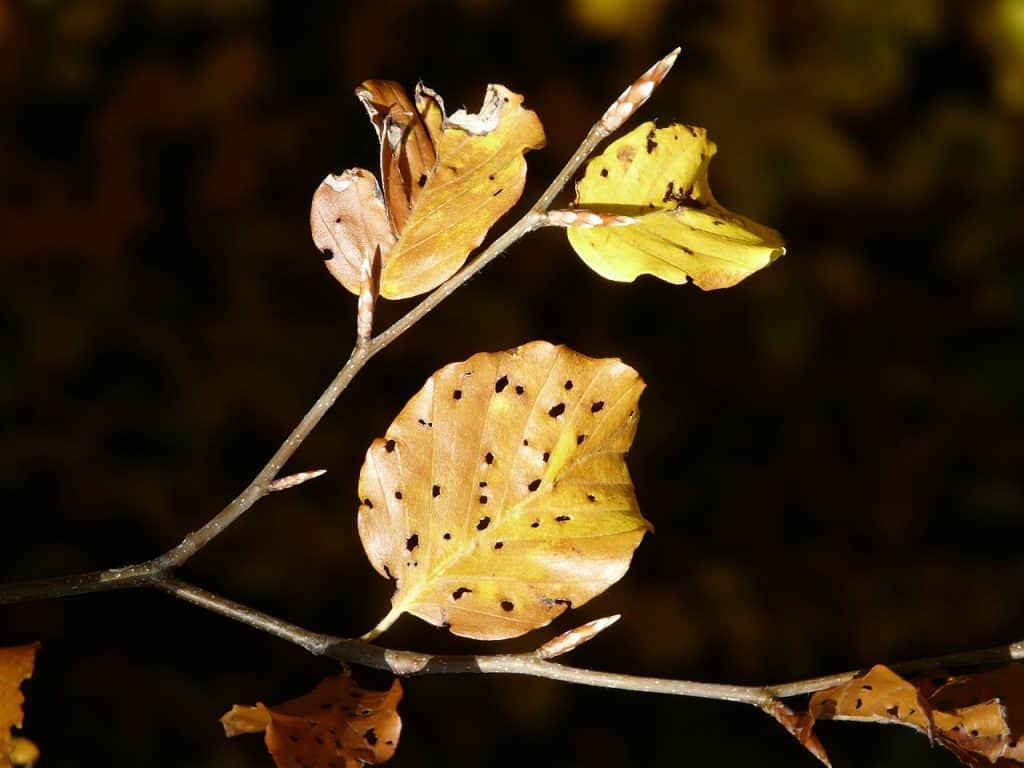 This symptom means thatthe plant has received too much heat and too much darkness.To help her recover, you should move her to a cooler environment.
This symptom means thatthe plant has received too much heat and too much darkness.To help her recover, you should move her to a cooler environment.
Leaves with diffuse yellow spots on the petiole
This pathology that extends towards the edge of the leaf until it dries up and sticks to the tuberis typical of fusarium,a disease caused by several species of a fungus called Phisarium.
If these symptoms are evident there is not much to do. That is why it is convenient to check them well before buying them in the nursery because most of the time they are bought already infected.
Leaves and flowers loosen and weaken
If it presents these symptoms, it means that the plant has been placed in a place that is too hot and dry. It is advisable to wet it well and move it to a cool environment so that it can recover.
Necrotic spots on the petals and rot
The base of the petioles and floral peduncles soften as a result of the damaging action of the «gray mold» fungus.
speckled leaves
Small cobwebs also appear on the leaves, especially on the underside or underside. This is common from attacks by mites, or red spiders, which are very harmful by the way.
The best remedy is to spray successively, because the lack of water causes these undesirable attacks. If the infection persists, chemicals should be used.
If the plant is small or medium, you can try to eliminate this evil tenant, cleaning each leaf with a soapy cotton ball and then washing the plant carefully with plenty of water to eliminate it.

![Photo of Orchid Care in Winter: [Soil, Pruning and Problems]](https://www.complete-gardening.com/wp-content/uploads/2022/08/orchid-care-in-winter-soil-pruning-and-problems-390x220.png)
![Photo of Zinc in Plants: [Uses, Advantages and Application]](https://www.complete-gardening.com/wp-content/uploads/2022/08/zinc-in-plants-uses-advantages-and-application-390x220.png)
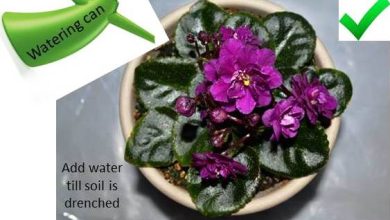
![Photo of Lonicera Implexa: [Cultivation, Irrigation, Associations, Pests and Diseases]](https://www.complete-gardening.com/wp-content/uploads/2022/08/lonicera-implexa-cultivation-irrigation-associations-pests-and-diseases-390x220.png)